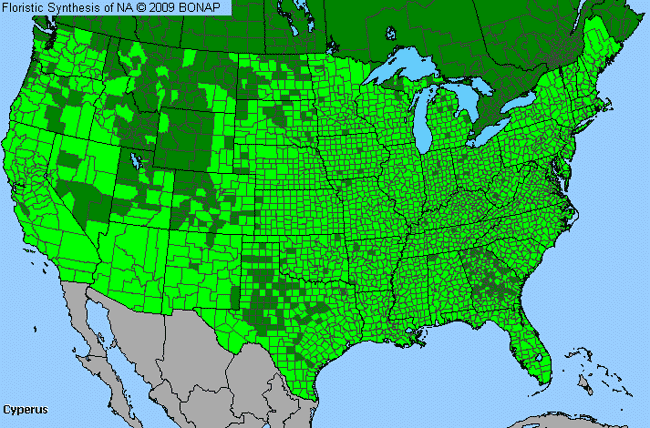Flat Sedge (Cyperus)

Flat Sedge Genus Details

Flat sedge is also known as yellow nut grass. It is native to North America. Sedges are found in wet soils. Sedge stems are three-cornered. Tubers (thick, modified stems, serving to store plant food) are found on the roots which taste like almonds and are edible. Pollen of flat sedge is shed by wind, but because the plant is found in marshy areas, exposure to pollen is minimal.
Flat Sedge Allergy Info

A minor source of allergy when direct exposure occurs, flat sedge is usually found growing out of contact from traditional human habitats.
Flat Sedge Pollen Description

Cyperus pollen grains are generally pyriform to less commonly ovoid, often oval to circular in polar view. The pollen grain is often folded and usually has 3-4 pores. The exine is thin and the surface is granular. The apertures are poorly defined and somewhat sunken, elongate, elliptical or ovoidal.
The pollen grains are 28 x 42 micrometers in size.
Species in This Genus

Allergenicity Legend:
 Mild Allergen |
Mild Allergen |
 Moderate Allergen |
Moderate Allergen |
 Severe Allergen |
Severe Allergen |
 Allergy Test Available
Allergy Test Available
Flat Sedge (Cyperus) is a genus of the CYPERACEAE family.
This genus includes the following allergenic species:
This genus includes the following allergenic species:













